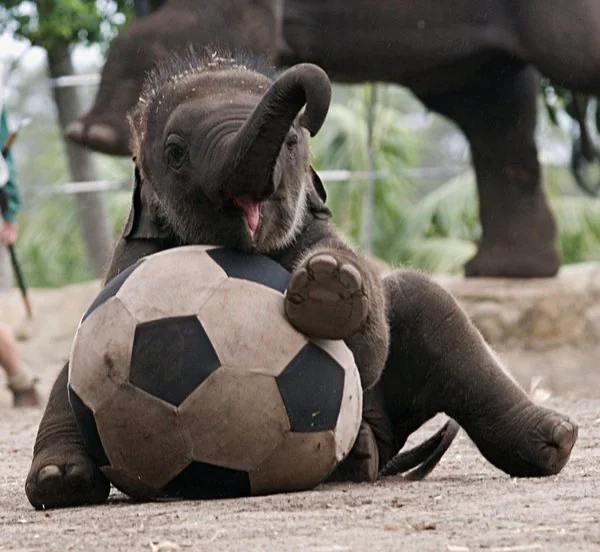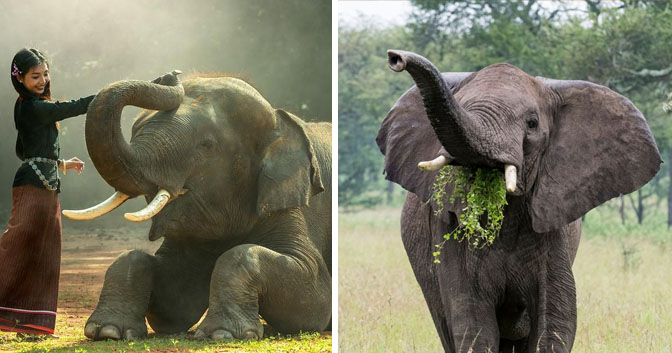What is the Profound Relationship Between Elephants and Humans? Elephants, with their remarkable size, intelligence, and social complexity, have shared an intricate and multifaceted relationship with humans for centuries. Spanning continents, cultures, and histories, this connection has evolved from awe-inspiring encounters to partnerships of mutual understanding and conservation efforts.
In this article, we delve into the depths of the relationship between elephants and humans, exploring its historical roots, cultural significance, challenges, and the inspiring collaborations aimed at ensuring the well-being of these majestic creatures.
Historical and Cultural Bonds:
The relationship between elephants and humans dates back thousands of years, touching various cultures and civilizations:
- Cultural Symbols: Elephants have been revered as symbols of wisdom, strength, and divinity in many cultures. In Hinduism, the deity Ganesha, with the head of an elephant, represents intellect and the removal of obstacles.
- Work Partners: Historically, elephants played significant roles in various human endeavors. From assisting in heavy labor, like moving logs, to being esteemed as regal mounts for royalty, elephants have served as both workmates and symbols of prestige.
- War and Communication: In ancient times, elephants were used in warfare due to their size and strength. Moreover, they also became essential means of communication and transportation in regions where other options were limited.
Challenges and Conservation:
While the historical connection is rich, the relationship between elephants and humans is not without its challenges:
- Habitat Loss: As human populations expand, elephant habitats shrink due to deforestation and urbanization, leading to human-elephant conflicts as elephants search for food and space.
- Poaching and Ivory Trade: The demand for ivory has led to the illegal poaching of elephants, threatening their populations and putting them at risk of extinction.
- Captive Exploitation: Some elephants are subjected to captivity for entertainment purposes, such as circuses or tourism activities, leading to concerns about their welfare and treatment.
- Conservation Efforts: Conservationists, governments, and organizations have been working tirelessly to protect elephants and their habitats. Initiatives range from anti-poaching efforts to establishing protected areas and corridors for their migration.

Positive Partnerships:
The relationship between elephants and humans has evolved beyond exploitation to meaningful partnerships:
- Ecotourism: Responsible ecotourism provides economic incentives for communities to protect elephants and their habitats. Therefore, the visitors engage in non-intrusive activities, such as observing elephants in the wild, which promote their conservation.
- Research and Education: Collaborations between researchers, conservationists, and local communities lead to a deeper understanding of elephant behavior, ecology, and needs. So, this knowledge informs conservation strategies and educates the public.
- Human-Elephant Conflict Mitigation: Innovative methods, such as using beehive fences and designated pathways, help mitigate human-elephant conflicts by discouraging elephants from entering human settlements.
The Ethical Lens:
As the relationship between elephants and humans evolves, ethical considerations come to the forefront:
- Captive Care: Captive elephants should be provided with proper care, adequate space, and enrichment that reflect their natural behaviors and well-being.
- Conservation over Exploitation: Collaborations should prioritize conservation over exploitation, focusing on preserving elephants in their natural habitats and ensuring their welfare.
A Shared Future: (Elephants and Humans)
The bond between elephants and humans is one that resonates through time, cultures, and continents. From awe-inspiring tales of ancient civilizations to modern conservation efforts, this connection reflects our complex relationship with the natural world. However, as we navigate the challenges of habitat loss, poaching, and ethical concerns, the lessons from history and the progress made in partnerships remind us that a harmonious coexistence is possible.
By working together, we can ensure that these magnificent creatures continue to thrive in their habitats, inspiring awe and wonder for generations to come, and reminding us of the importance of preserving the delicate balance between humans and the animal kingdom.

